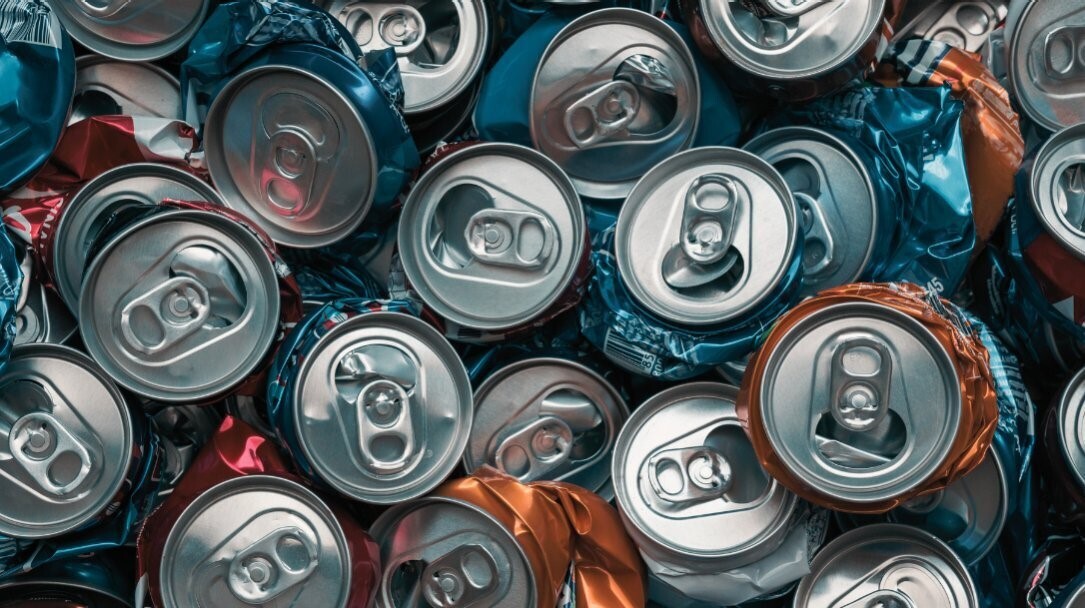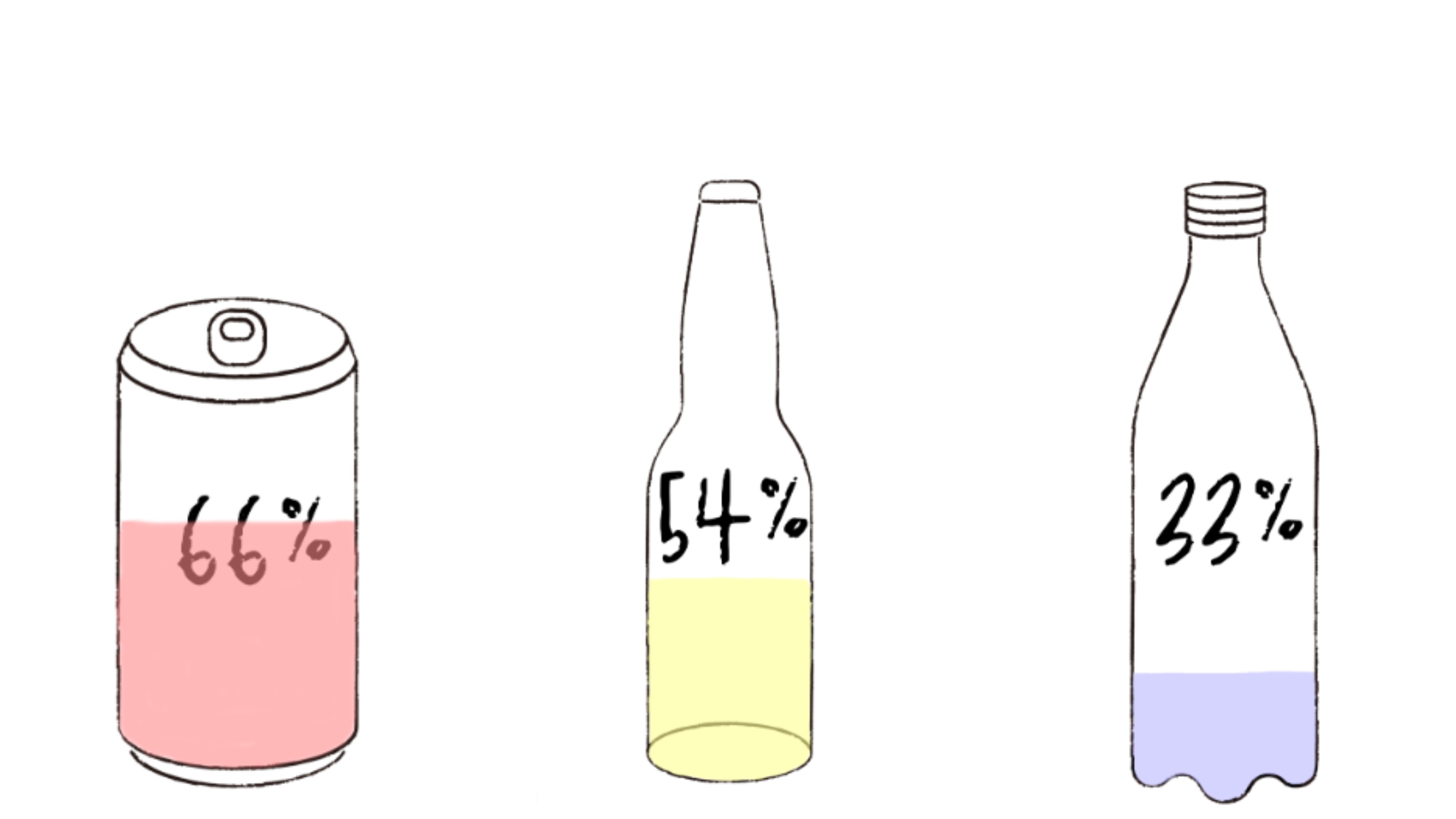

The grocery aisle is a kaleidoscope of colourful packaging crafted to grab the attention of the buyers and entice them to make a purchase. Be it aluminium cans, bottles, and other materials, the packaging story doesn't end once it is opened and recycled; the real story begins when the material returns to the shelves as a new product or is transformed into something very different.

The latest report from the Australian Packaging Covenant Organisation (APCO) paints a reasonably positive picture: in 2022–23, packaging across all industries in Australia contained an average of 44 per cent recycled content. However, this figure hides significant variation between materials.
To explore the differences, ABC Science examined three commonly used and relatively easy-to-recycle packaging materials — glass bottles, aluminium cans, and PET plastic bottles — to find out how much of each successfully makes it through the recycling system to start a new life on supermarket shelves.
Recycling aluminium cans
Aluminium cans, such as those used for soft drinks and beer, are a staple of the recycling industry thanks to their high value and durability. Made from aluminium with a polymer coating inside, they can be recycled indefinitely without losing quality. In fact, around three-quarters of all aluminium ever produced remains in use today.
But how much of the aluminium in a can on an Australian supermarket shelf is recycled? That depends on the brand. According to Coca-Cola Europacific Partners, about two-thirds of the aluminium in their Australian cans is recycled. Meanwhile, Orora, another major packaging company, reported an even higher recycled content rate of 72 per cent.
While company-specific data is helpful, Ben Madden, a researcher at the University of Technology Sydney specializing in resource recovery systems, emphasized that industry-wide data offers a more comprehensive view of aluminium recycling in Australia.
 Image Source: ABC Science: Peter de Kruijff
Image Source: ABC Science: Peter de Kruijff
Australian aluminium recycling
Across the industry, APCO's report found that aluminium packaging in Australia contained an average of 66 per cent recycled content. Compared to other countries, Australia would rank "somewhere in the middle," according to Dr Ben Madden. However, obtaining comparable data can be challenging, especially for countries like the United States. While the US does have a "recycling goal," Dr Madden noted that data on recycled packaging is limited to a small subset of industry members.
In Australia, cans dropped off at 10-cent collection points are sorted, crushed, baled, and sold to aluminium recyclers, explains Danielle Smalley, CEO of Exchange for Change, which coordinates the container deposit schemes in NSW and the ACT. However, due to the limited number of aluminium re-smelting facilities in the country, these cans are typically sent overseas for processing, with South Korea being one of the main destinations.
Around 20 per cent of the aluminium in the sheets comes from post-consumer material collected through recycling centres or 10-cent deposit schemes. Another 47 per cent is sourced from factory off-cuts or unused aluminium that never left the production line. These sheets are then sent back to Australia, where they are shaped into new products, such as cans, ready to be filled, shipped to local stores, and sold—restarting the cycle once again.
Recycling other metals
Glass is another material that boasts high recyclability. Recycled glass is almost identical to new glass, and like aluminium, it maintains its quality even after being recycled countless times. According to APCO's 2022–23 report, the average recycled content in glass packaging, including everything from jars to beer bottles, was 54 per cent. This figure is gradually rising, especially with the increased implementation of container deposit schemes that help separate glass from contaminants. Most glass recycling occurs "post-consumer," where glass is collected through 10-cent deposit schemes or recycling bins.
Plastic recycling is complicated because plastic isn't a single material—it includes a wide variety of types, each with different levels of recyclability. These range from rigid high-density polyethylene (HDPE) to polystyrene and soft plastics. Among them, polyethylene terephthalate (PET), a hard plastic marked by the number "1" inside the recycling triangle, has the highest recycled content.
When a PET bottle reaches a recycling plant, it is sorted, washed, and shredded into flakes. According to Exchange for Change CEO Danielle Smalley, these flakes are then processed into recycled PET resin, which can be used to create new beverage bottles and other food-grade packaging.
Importance of aluminium cans recycling
Aluminium beverage cans are crucial to the nation's recycling system and economy. Using recycled aluminium to produce beverage cans is highly cost-effective and saves more than 90% of the energy needed compared to manufacturing cans from new, primary aluminium. Additionally, aluminium's exceptional recycling capabilities ensure that most recycled cans are returned to their original form, unlike glass or plastic bottles. This makes aluminium beverage cans a standout example of the circular economy in action.
As per AL Circle's report, the global usage of aluminium beverage cans rose from 343 billion units in 2015 to 416 billion in 2020. By 2030, global production is projected to reach 627 billion units. The global aluminium cans market was valued at USD 55.5 billion in 2023 and is expected to grow to approximately USD 85.6 billion by 2032, with a compound annual growth rate (CAGR) of 4.93% from 2023 to 2032.
The demand for aluminium in the packaging sector, particularly for beverage cans, is increasing, especially in developing countries where growth is outpacing that of developed economies. While downgrading can present a potential risk to this demand, several factors, including a rise in younger consumers, new product variations, and growing environmental awareness, are contributing to the growing popularity of aluminium beverage cans.
Responses








